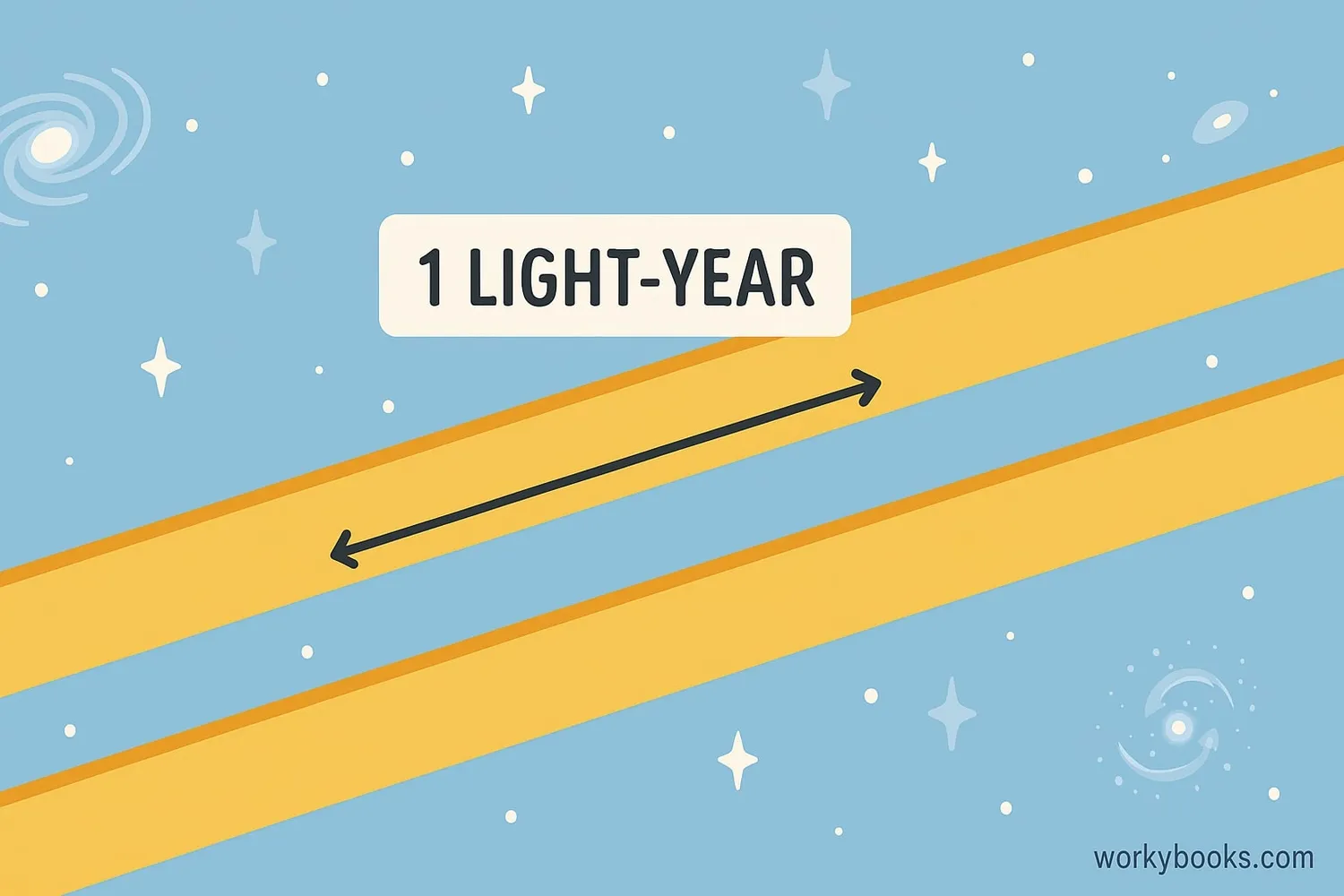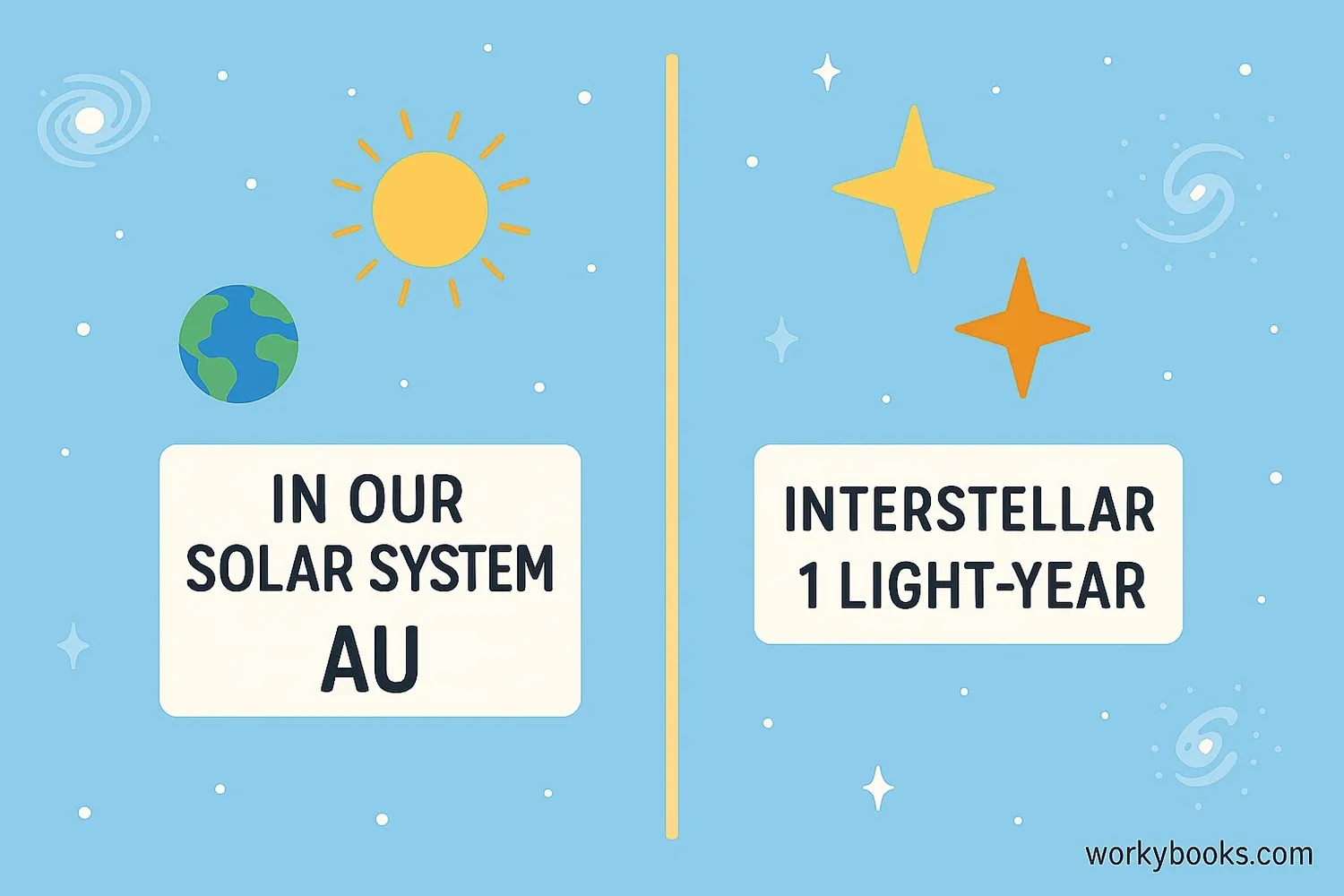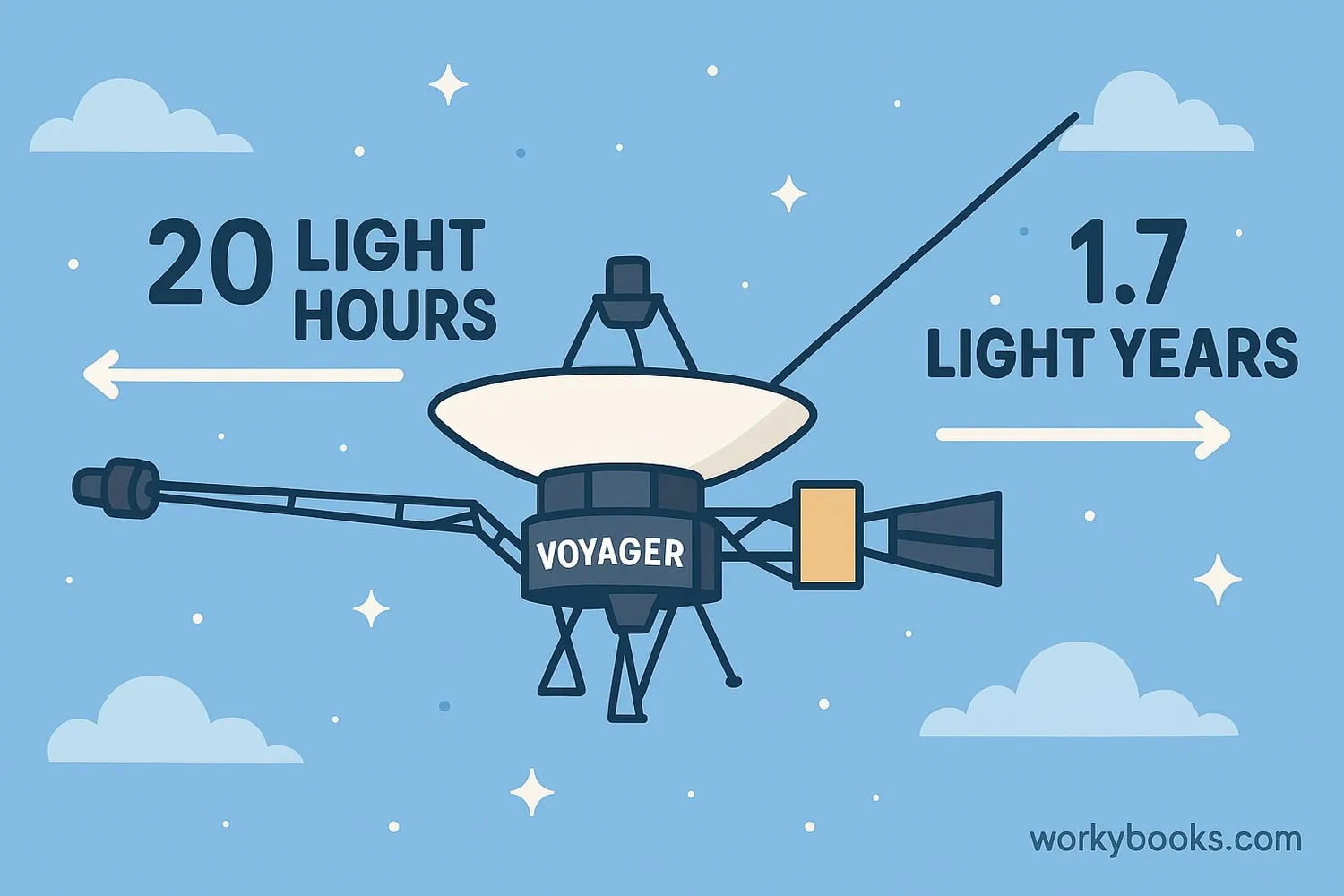Light Year - Definition, Examples, Quiz, FAQ, Trivia
Discover how astronomers measure vast distances in space
What is a Light Year?

A light year is a special unit that astronomers use to measure astronomical distances in space. But here's the important thing: a light year is not a measure of time - it's a measure of distance!
Specifically, a light year is the distance that light travels in one year. Since light moves incredibly fast (about 300,000 kilometers per second), a light year is an enormous distance - about 9.46 trillion kilometers!
We use light years because space is so incredibly vast. Measuring distances between stars and galaxies in kilometers would be like measuring the distance from New York to Los Angeles in millimeters - the numbers would be huge and hard to work with!
Space Fact!
Light travels so fast that it could circle Earth 7.5 times in just one second!
Why Use Light Years?

Astronomers use light years for several important reasons:
Vast Distances
Space is incredibly huge - stars and galaxies are separated by trillions of kilometers
Time Connection
When we look at distant objects, we see them as they were in the past
Universal Scale
Light years help us understand the immense scale of the universe
Practical Numbers
Instead of saying "9,460,000,000,000 km," we say "1 light year"
The most fascinating thing about light years is that they connect distance and time. When we look at a star that's 100 light years away, we're seeing it as it looked 100 years ago! This is because the light from that star took 100 years to reach us.
How Far is a Light Year?

To understand how big a light year really is, let's look at some comparisons:
Earth to Moon
Light takes just 1.3 seconds to travel this distance
Earth to Sun
Light takes about 8 minutes and 20 seconds
To Nearest Star
Proxima Centauri is 4.24 light years away
Now let's look at some mind-blowing distances:
Our Solar System: From the Sun to Pluto is about 5.5 light hours (not even one light day!)
Our Galaxy: The Milky Way galaxy is about 100,000 light years across. That means it would take light 100,000 years to travel from one side to the other!
Nearest Galaxy: The Andromeda Galaxy is 2.5 million light years away. When you look at Andromeda through a telescope, you're seeing it as it was 2.5 million years ago!
Light Years in Space Exploration

Understanding light years helps us grasp the challenges and achievements of space exploration:
Spacecraft Travel
Voyager 1 has traveled about 22 light hours since 1977
Communication Delays
Messages to Mars take 4-24 minutes each way
Looking Back in Time
Hubble Telescope sees galaxies as they were billions of years ago
The vast distances measured in light years show us how special Earth is. Our planet exists in a tiny pocket of the universe where conditions are just right for life as we know it.
When we study distant stars and galaxies using light years, we're actually doing time travel! The farther away an object is, the further back in time we're seeing it. This helps astronomers understand how the universe has changed over billions of years.
Light Year Quiz
Test your knowledge about light years with this quiz! Answer all 5 questions to see how much you've learned.
Frequently Asked Questions
Here are answers to some common questions about light years:
Space Distance Trivia
Discover some amazing facts about cosmic distances:
Human Space Travel
The farthest humans have traveled from Earth is about 0.002 light seconds - during the Apollo missions to the Moon. At that pace, it would take over 80,000 years to reach the nearest star!
Galactic Distances
Our Milky Way galaxy is so large that light takes about 100,000 years to travel from one edge to the other. The Andromeda Galaxy, our nearest galactic neighbor, is 2.5 million light years away.
Cosmic Time Machine
When we look at the Andromeda Galaxy through a telescope, we're seeing it as it was 2.5 million years ago - before humans existed! The Hubble Space Telescope has seen galaxies as they existed over 13 billion years ago.
Voyager's Journey
Voyager 1, launched in 1977, is the farthest human-made object from Earth. After 45+ years of travel, it's only about 22 light hours away - less than one light day! It would take over 17,000 years to travel one light year at its current speed.


